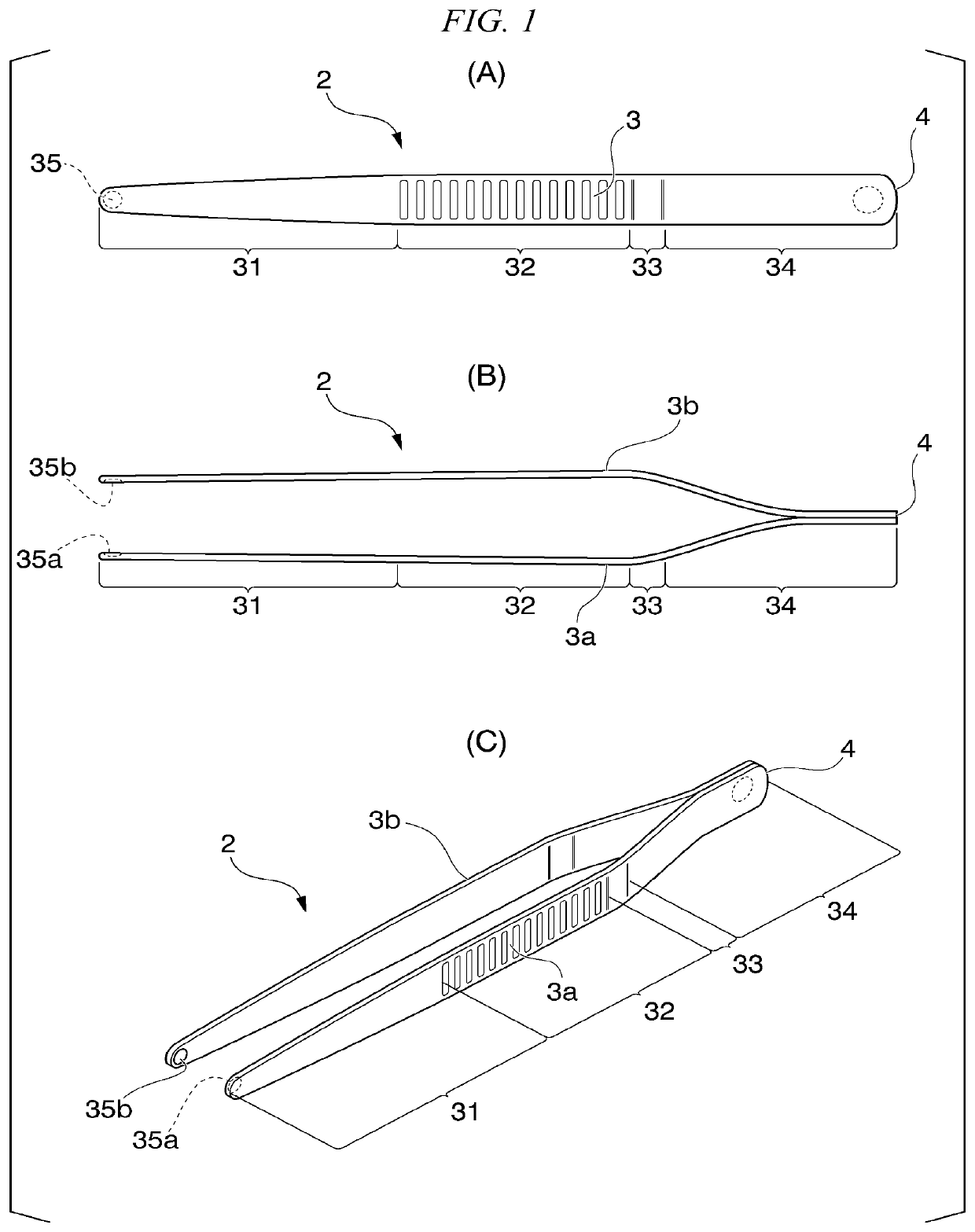Method for determining likelihood of sporadic colorectal cancer development
- Summary
- Abstract
- Description
- Claims
- Application Information
AI Technical Summary
Benefits of technology
Problems solved by technology
Method used
Image
Examples
example 1
[0189]With respect to DNA in large intestinal mucosa collected from 8 healthy subjects (5 males and 3 females), and 6 colorectal cancer patients (3 males and 3 females) who had not developed other inflammatory diseases of the large intestine such as ulcerative colitis and had been diagnosed as having sporadic colorectal cancer by pathological diagnosis using biopsy tissue in an endoscopic examination, comprehensive analysis for a methylation rate of a CpG site was conducted.
[0190]
[0191](1) Biopsy and DNA Extraction
[0192]Mucosal tissue was collected from 3 locations in the large intestine of the same subject, and frozen and stored at −80° C. The collected sites were cecum, transverse colon, rectum, and cancerous part for the colorectal cancer patients, and were cecum, transverse colon, and rectum for the healthy subjects. The collected tissue was finely cut and DNA was extracted using QiAmp DNA kit (manufactured by Qiagen).
[0193](2) Quality Evaluation of DNA Sample
[0194]The concentra...
example 2
[0232]With respect to DNA in large intestinal mucosa collected from 28 healthy subjects and 20 colorectal cancer patients who had not developed other inflammatory diseases of the large intestine such as ulcerative colitis and had been diagnosed as having sporadic colorectal cancer by pathological diagnosis using biopsy tissue in an endoscopic examination, comprehensive analysis for a methylation rate of a CpG site was conducted.
[0233]For the DNA to be subjected to analysis of a methylation rate of a CpG site, DNA was extracted from mucosal tissue of the rectum of each subject in the same manner as in Example 1, the whole genome was amplified, and quantification and comparative analysis of the DNA methylation level of the CpG site were performed. The results were used to calculate DiffScore, and cluster analysis and principal component analysis were performed. Infinium Methylation EPIC BeadChip (manufactured by Illumina) was used for BeadChip. In addition, setting conditions for Geno...
example 3
[0248]CpG biomarker candidates were extracted from the DNA methylation levels (13 values) of rectal mucosa samples obtained in Examples 1 and 2.
[0249](1) Extraction of CpG Biomarker Candidate
[0250]Specifically, firstly, in 26 colorectal cancer patient samples which had been diagnosed as sporadic colorectal cancer and 36 healthy subject samples, 42 CpG sites with an absolute value of Δβ higher than 0.15 were extracted from 866,895 CpG sites.
[0251]Next, the following two types of logistic regression models were created.
[0252][Model 1] 861 logistic regression models based on all combinations of 2 CpG's selected from 42 CpG sites.
[0253][Model 2] 11,480 logistic regression models based on all combinations of 3 CpG's selected from 42 CpG sites.
[0254]Regarding the discriminant expressions of both logistic regression models, a CpG site that satisfies each of the following two criteria was selected.
[0255][Criterion 1] Sensitivity of higher than 90%, specificity of higher than 90%, coefficien...
PUM
| Property | Measurement | Unit |
|---|---|---|
| Fraction | aaaaa | aaaaa |
| Length | aaaaa | aaaaa |
| Length | aaaaa | aaaaa |
Abstract
Description
Claims
Application Information
 Login to View More
Login to View More - R&D
- Intellectual Property
- Life Sciences
- Materials
- Tech Scout
- Unparalleled Data Quality
- Higher Quality Content
- 60% Fewer Hallucinations
Browse by: Latest US Patents, China's latest patents, Technical Efficacy Thesaurus, Application Domain, Technology Topic, Popular Technical Reports.
© 2025 PatSnap. All rights reserved.Legal|Privacy policy|Modern Slavery Act Transparency Statement|Sitemap|About US| Contact US: help@patsnap.com



